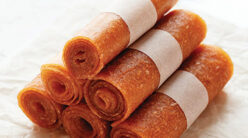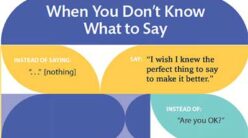If you’re like most people, you’re probably familiar with common weight-loss tricks: Always eat breakfast. Bypass fried and fatty foods. Boost your intake of fruits and vegetables. Drink plenty of water. But you may not realize an often-overlooked secret to weight loss and health: fiber-rich foods.
Fiber is an essential part of any diet, but Americans are often shortchanged on it. While dietitians recommend that adults consume between 25 and 38 grams of fiber a day, recent studies find that most adults get less than half that amount—between 11 and 19 grams a day. You may be surprised to learn that fiber is not only important for good health and proper nutrition—it’s also a key part of weight loss.
The Facts About Fiber
OK, so what is fiber, anyway?
“Fiber is a part of foods that cannot be digested,” says Dawn Jackson, a registered dietitian and author of Superfood Swap. “It’s found in plant foods, and there are two kinds—soluble and insoluble.”
The two types react differently in water—soluble fiber dissolves in water, becoming gummy, while insoluble fiber doesn’t dissolve in water. “Soluble fiber acts more like a sponge,” says Jackson. “It helps suck cholesterol out and lower bad cholesterol levels.” Insoluble fiber acts more like a broom than a sponge, essentially sweeping out your intestines and keeping the area clean, adds Jackson. “They both play different roles, but they’re equally important in promoting general health,” she says.
Jackson admits that talking to clients about fiber often produces jokes. “When I bring up fiber, I get little giggles because everyone associates fiber with going to the bathroom and staying regular,” she says. “It does work. If you drink enough water with fiber, you’ll have a regular schedule of going to the bathroom.” There’s a flip side, though—if you eat too much fiber and don’t drink enough fluids, you may feel bloated or constipated. Drinking plenty of water will prevent this.
But fiber has other benefits too. “We’ve also been linking diets high in fiber to a decreased risk of colon cancer, diverticulosis, high blood pressure, and some forms of cancer,” says Jackson. “And because it lowers cholesterol levels, fiber is related to improved heart health.” Increasing fiber intake may also help people with diabetes manage their blood sugar.
The Secret Weight-Loss Weapon
A number of studies have found that simply adding more fiber to your diet can produce weight loss over several months. Adopting a diet that’s high in fiber-rich foods (think fruits, vegetables, beans) can also help you reduce your overall calorie intake, producing even more dramatic weight-loss results.
Adding fiber to your diet helps with weight loss in a number of ways. First, fiber-rich foods, such as fruits, vegetables, beans, and whole grains, are usually loaded with vitamins and minerals, making them a healthy bet. But fiber is also a calorie-free “filler” of sorts.
“Fiber provides a full feeling because it really sits in your belly, and with enough fluids or enough water, it kind of pushes on your stomach walls and makes you feel full,” explains Jackson. “So, if you eat a high-fiber breakfast, you’ll stay full longer, which leads to less snacking and less calories and leads to weight loss.”
Fiber also slows down the digestion process, which means food stays in your stomach longer—and you don’t become hungry as quickly. This allows your body to obtain the vitamins, minerals, and other nutrients out of the food. In fact, people with irritable bowel syndrome and other digestive problems are often counseled to eat more fiber to help improve their dietary status.
Finally, because fiber-rich foods tend to be lower in fat, you may lose weight without even trying. “If you go out of your way to include more fiber into your diet, you’ll typically eat the healthier foods which are less caloric,” says registered dietitian Joy Bauer, author of From Junk Food to Joy Food. “Thus, you’ll take in fewer calories and ultimately lose weight.”
Finding Fiber
To add fiber to your diet, make sure that you’re eating at least five servings of fruits and vegetables each day. This is the minimum recommended for good health, and most fruits and vegetables are loaded with fiber. Apples, pears, and prunes are all high in soluble fiber, which helps lower cholesterol levels. And don’t forget to eat the skins of your apples, potatoes, and other produce—just scrub them well to remove dirt and pesticides.
Beans are another excellent source of fiber. Black beans, pinto beans, great northern beans, chickpeas, and kidney beans are all high in fiber. Nuts, seeds, and whole grains, such as oatmeal, barley and rye, are all excellent fiber sources. Opt for naturally fiber-rich whole foods instead of packaged foods (such as crackers, granola bars, etc.), because looks can be deceiving. They may appear to be healthier than they really are and often contain lots of sugar and additives and very little, if any, high-quality fiber.
Here are some easy, can’t-fail ways to add fiber to your diet:
• Start with breakfast. Skip highly processed morning options, such as pastries, sugary cereal, or white bread, because they lack nutrients and fiber. Try oatmeal topped with berries instead. For a cold cereal, always look for whole grain options, such as shredded wheat or bran flakes.
• Add vegetables to your meals. To upgrade your go-to meals, add a side dish of steamed vegetables, put tomato slices on your sandwich, or order extra mushrooms and onions on your pizza.
• Go whole grain. Whenever you can, opt for whole grain versions over more processed pastas and breads.
• Replace chips with veggies. Craving chips and dip? Try a healthier alternative by dipping baby carrots, cherry tomatoes, or peppers in a low-fat dressing.
• Give fiber-rich foods the spotlight. High-fiber foods aren’t just side dishes and afterthoughts. For a healthy dose of fiber, choose main dishes that are high in beans or legumes, such as bean soups, veggie chili, or black beans with brown rice.
The fact is, fiber-rich foods tend to be among the most nutritious there are. So add more of them to your diet. Your health—and your waistline—will benefit.
.
Kelly K. James is a health writer and certified personal trainer based in Downers Grove, Illinois






